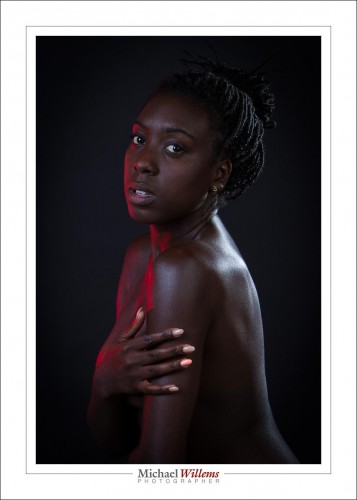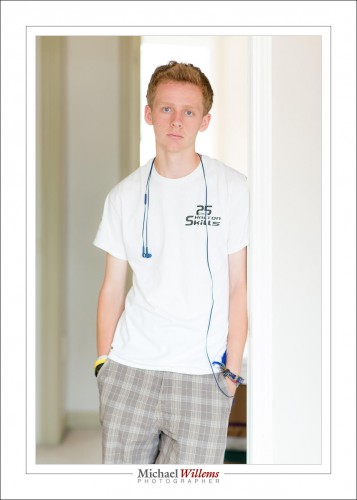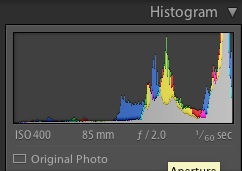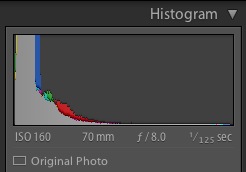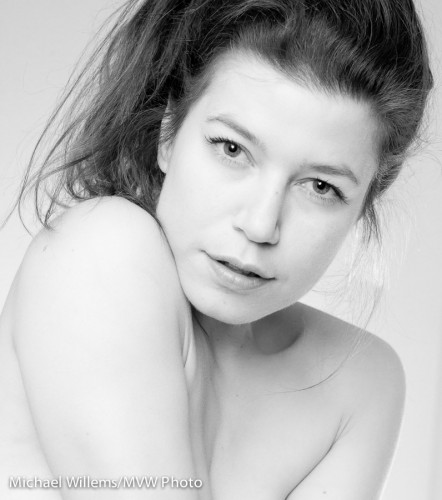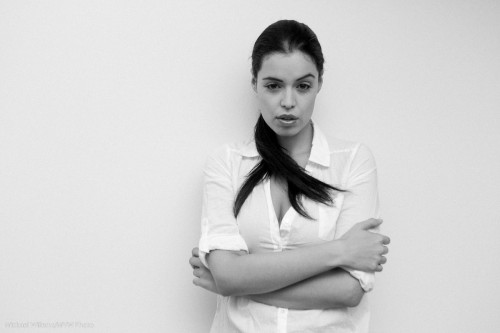There are many “secrets” in photography. They’re not secret, really: they are the distilled knowledge. The simplified “start here” points.
So let me give you one now—one of many from the Flash course; this one, which by the way I am teaching on behalf of Canon Canada at Vistek in Toronto tomorrow, Saturday:
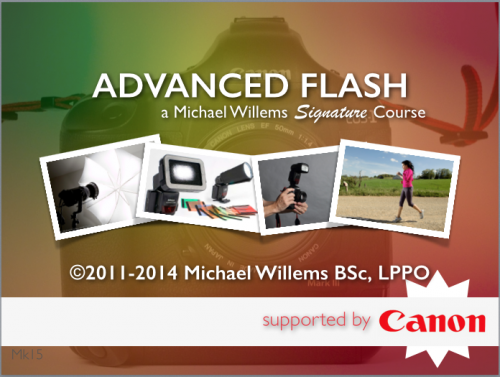
Quick High Key Portrait
- Get a camera with a flash mounted on the camera.
- Set the camera to M (manual), 800 ISO, 1/125th sec, f/5.6
- Ensure that the flash is set to TTL mode (Through-the-lens metering).
- Set Flash Compensation to +1.7 stops (“plus one and two thirds”). You can do this on the flash (or on the camera if you are using Canon. In Nikon, do it on the flash please, or you are limited to +1 stop).
- Point that flash upward 45 degrees, behind you.
- Find small room with white (or at least whiteish) ceiling/walls behind you.
- Dress the subject in light clothing.
- Put the subject in front of you, about 1-2 metres away. Focus on model. Fire.
Now you will get this (I converted it to B/W and added some “film grain” for effect):
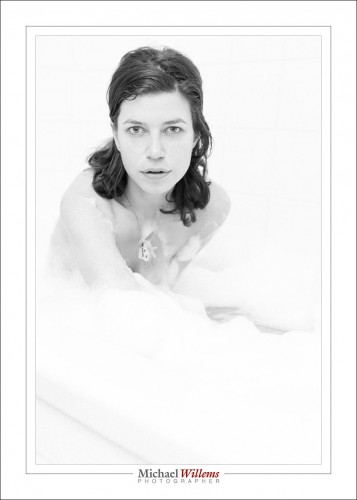
Not bad for a 30-second shot, no?
You should turn on your “blinkies”: you want the wall, but not the subject, to blink (to be overexposed, or close to it).
If the picture is too dark, increase flash compensation. If that makes no difference, then it is a lack of available power; in that case increase ISO, or decrease the “f-number” (or both).
And that’s all there is to it, really.

